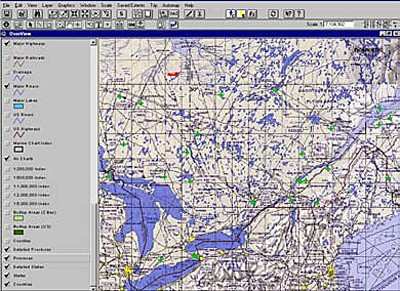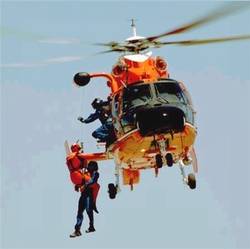System Used To Coordinate Rescues
EMS Technologies says its SARMaster search-and-rescue (SAR)
information system is now installed in the Vermont State Police's
24/7 dispatch center in Waterbury (VT). The EMS software is being
used to process Personal Locator Beacon (PLB) alerts. PLBs were
made available to the 48 contiguous states in the United States on
July 1, 2003, but this is the first statewide implementation of
that technology. The announcement came at the Emergency Response
2004 Exhibition & Conference in San Diego (CA).

When a PLB is set off, SARMaster can detect the location of the
alert within a kilometer. For GPS-equipped PLBs, the SARMaster
software can narrow the location to within 500 meters.
The Air Force Rescue Coordination Center (AFRCC) at Langley Air
Force Base, already a user of SARMaster when it receives distress
alerts in its national center, has contracted with EMS to deploy
SARMaster at the state level to support local rescue
activities.
"The State of Vermont is the first site in the United States to
roll out SARMaster, and is the first state to be fully operational
for tracking PLB alerts wherever they occur in the state," said Dr.
Neil Mackay, senior vice president and general manager, EMS
Technologies' SATCOM Division. "Time is a critical commodity during
a search-and-rescue operation, and SARMaster's GIS information
mapping, incident management and other capabilities are ideal for
supporting local rescue operations when seconds count."
 While Vermont has not yet had any
live PLB activations, Lt. Jocelyn Stohl, the state SAR coordinator
and a member of the Vermont State Police, predicts that PLBs will
become an attractive option for outdoor enthusiasts, including the
operators of large outdoor facilities, such as ski resorts. She
says the PLB technology and SARMaster software will allow rescue
teams to narrow the search area much more quickly, which is
critical in a state that has varied terrain and is marked by
mountain ranges running north and south across the state. Calling
SARMaster "user friendly," Stohl said, "The biggest potential we
see with the system is we can locate individuals much more quickly.
That will make rescue missions shorter in duration because we have
a much more pinpointed area where lost individuals can be found,
which, in turn, will reduce costs to the state."
While Vermont has not yet had any
live PLB activations, Lt. Jocelyn Stohl, the state SAR coordinator
and a member of the Vermont State Police, predicts that PLBs will
become an attractive option for outdoor enthusiasts, including the
operators of large outdoor facilities, such as ski resorts. She
says the PLB technology and SARMaster software will allow rescue
teams to narrow the search area much more quickly, which is
critical in a state that has varied terrain and is marked by
mountain ranges running north and south across the state. Calling
SARMaster "user friendly," Stohl said, "The biggest potential we
see with the system is we can locate individuals much more quickly.
That will make rescue missions shorter in duration because we have
a much more pinpointed area where lost individuals can be found,
which, in turn, will reduce costs to the state."
SARMaster was designed by EMS SATCOM Division's Emergency
Management Product Group to meet the specialized needs of Search
& Rescue (SAR) controllers and Rescue Coordination Centers
(RCC) around the world. SARMaster provides controllers with an
integrated spatial/textual view of information to effectively
prosecute SAR incidents. Developed under the Windows operating
system, SARMaster supports dual monitor capabilities for
simultaneously viewing of spatial and textual information in a
networked configuration, or can be configured for use with
portable, stand-alone units.
EMS SATCOM has provided ground equipment and management systems
for use with the COSPAS-SARSAT satellite system since its launch in
1981. Since that time, the system has been credited with saving
more than 15,000 lives by using spacecraft and ground facilities to
detect and locate signals from distress beacons.
 ANN's Daily Aero-Term (12.13.25): Light Gun
ANN's Daily Aero-Term (12.13.25): Light Gun Aero-News: Quote of the Day (12.13.25)
Aero-News: Quote of the Day (12.13.25) NTSB Final Report: Gippsland GA-8
NTSB Final Report: Gippsland GA-8 Classic Aero-TV: Historically Unique -- Marlin Horst's Exquisite Fairchild 71
Classic Aero-TV: Historically Unique -- Marlin Horst's Exquisite Fairchild 71 Airborne 12.12.25: Global 8000, Korea Pilot Honors, AV-30 Update
Airborne 12.12.25: Global 8000, Korea Pilot Honors, AV-30 Update




